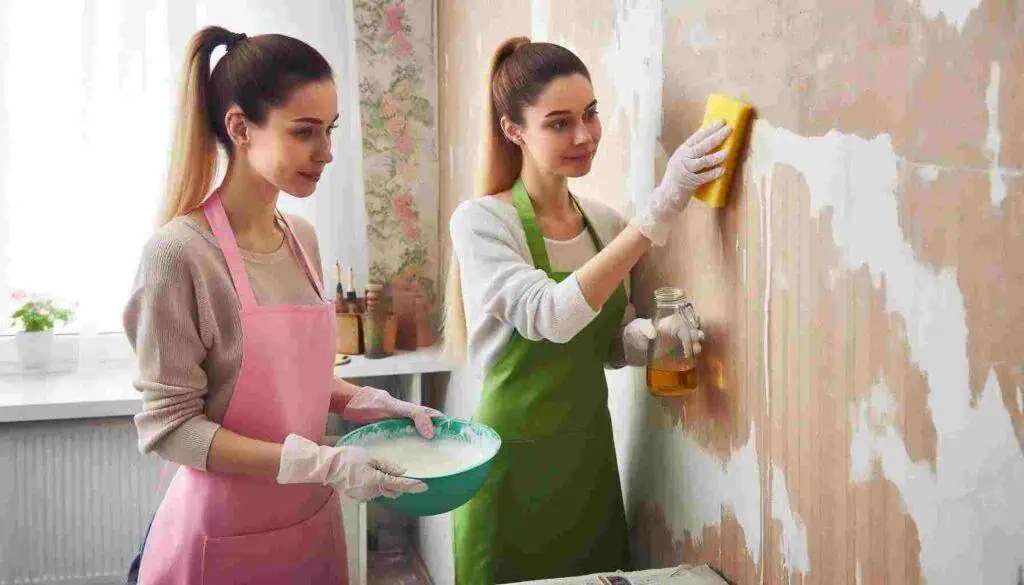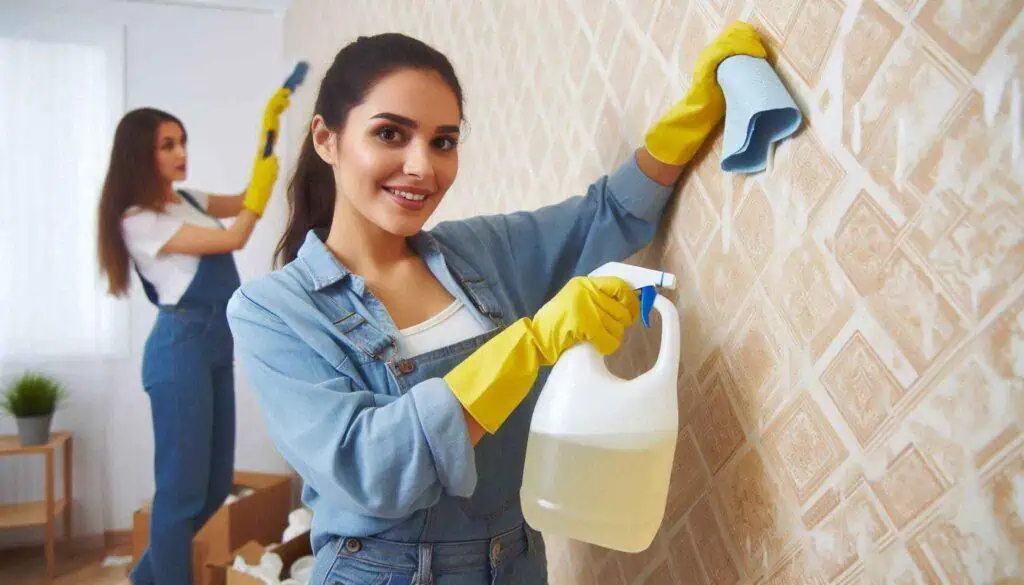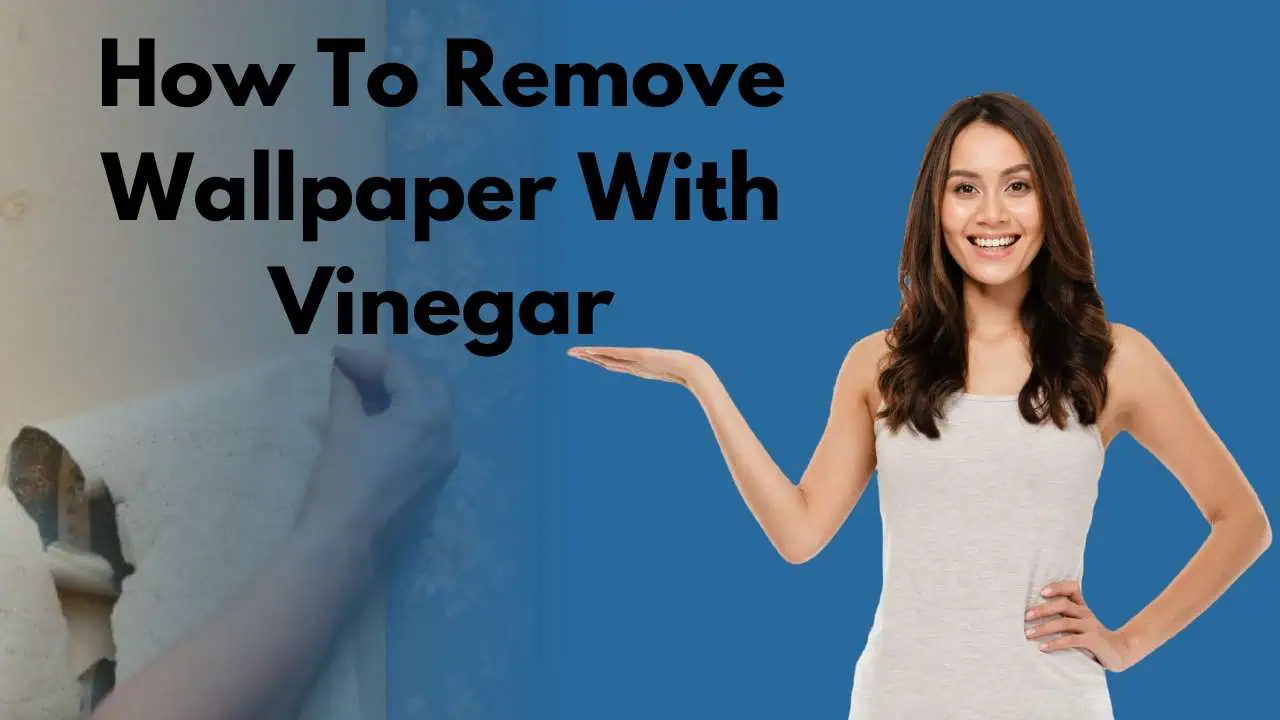If you want to give a new look to your room by looking at the old wallpaper, you cannot save money on perishable products. Rather, you can learn how to remove wallpaper with vinegar from the winker a confident, natural residency that you are naturally ready to eat in your pocket. Just with a new kind of steps, you can work and shape a new life for your heart without rehearsing on the wheel.
In this guide, we will tell you how to remove wallpaper with vinegar, share some useful suggestions, and tell you why vinegar is the best option for a clean, healthy house.
Why Vinegar is the Perfect Wallpaper Remover?

Vinegar is a powerful natural cleaner that has many uses around the house. But what makes it great for wallpaper removal?
- Affordable: White vinegar is inexpensive and can often be found in most homes.
- Eco-Friendly: Vinegar is a natural, biodegradable solution, making it safe for both your home and the environment.
- Effective on Adhesive: The acidity in vinegar helps break down the adhesive used to stick wallpaper to the walls, making it easier to remove.
If you are wondering how to remove wallpaper with vinegar, the answer is simple: the header works by loosening the glue, so you can peel it with less effort.
How to Remove Wallpaper with Vinegar?: A Step-by-Step Guide

Removing wallpaper with vinegar is easier than you might think! Here’s a detailed guide on how to remove wallpaper with vinegar:
1. Prepare Your Materials
Before you start, gather the following tools:
- White vinegar
- Warm water
- Spray bottle
- Putty knife or scraper
- Sponge
- Drop cloth (to protect your floor)
2. Mix Your Vinegar Solution
In a spray bottle, mix equal parts of white vinegar and warm water. Shake well to combine.
3. Spray the Wallpaper
Sprinkle vinegar solution on the wallpaper. Focus on a part at a time to prevent the solution from drying before completing their magic. Leave it on for about 10-15 minutes.
4. Begin Peeling the Wallpaper
Once the wallpaper is soaked, use your knives or scratches to gently lift a corner of the wallpaper. Start from top and work on your way, like you go. The vinegar breaks the gum, making it easier to separate large parts at one time.
5. Scrape Off Stubborn Sections
If any wallpaper pieces are still trapped, apply more vinegar solutions and give it extra time to the souk. Then, use your puny knife to separate the remaining pieces.
6. Clean the Wall
After removing all the wallpaper, immerse a sponge in warm water and use it to wipe the wall and remove any leftover glue or residue. This move ensures that your walls are smooth and ready for new coat or new wallpaper.
Tips for Easier Removal
- Test a small area first: Before spraying the entire wall, test the vinegar solution on a small section of wallpaper to see how well it works.
- Use warm water: Warm water helps vinegar penetrate the wallpaper glue faster, making removal easier.
- Score the wallpaper: For stubborn wallpaper, use a scoring tool to lightly puncture the surface. This will allow the vinegar solution to seep through and break down the glue faster.
- Have patience: Some wallpapers may take more time to soften, especially if they have been on the wall for years. If needed, apply a second round of the vinegar solution and give it more time to soak.
Dealing with Stubborn Wallpaper
If you find that the wallpaper is not coming off easily, try the following techniques:
- Increase the vinegar concentration: Use a mixture of 75% vinegar to 25% water for tougher spots.
- Use a steamer: For extremely difficult wallpapers, consider using a wallpaper steamer alongside the vinegar solution for faster results.
- Work in small sections: Breaking down the process into small areas makes it less overwhelming and ensures better results.
Benefits of Using Vinegar for Wallpaper Removal
Removing wallpaper with vinegar is not only a budget-friendly method but also has several other benefits:
| Benefits | Explanation |
|---|---|
| Non-Toxic | Safe for use around children and pets. |
| Eco-Friendly | Vinegar is a natural product, reducing the use of harmful chemicals. |
| Affordable | White vinegar is inexpensive compared to commercial wallpaper removal products. |
| Effective on Adhesive | Vinegar breaks down wallpaper glue effectively, reducing effort. |
Pros and Cons of Removing Wallpaper with Vinegar
| Pros | Cons |
|---|---|
| Eco-Friendly: Safe for home and the environment | May Require Patience: Stubborn areas may need extra time |
| Affordable: Budget-friendly solution | Strong Vinegar Smell: Vinegar odor can be strong but fades quickly |
| Effective on Adhesive: Dissolves glue easily | Messy Process: Wallpaper removal can get messy, requiring cleanup |
Why Vinegar is a Great Alternative to Commercial Wallpaper Removers?

The use of vinager to remove wallpaper is not only effective but also a healthy and environment friendly option. Commercial wallpaper remover often has rigid chemicals that produce strong smoke and can irritate your skin. On the other hand, vinegar is non toxic, soft on the skin, and safe for her family and pets.
How to Remove Wallpaper with Vinegar for an Easy and Clean Finish?
Learning how to remove wallpaper with vinegar is a simple, cost-effective solution both environment-friendly and effective. This natural method ensures that you can handle wallpaper removal without rigid chemicals or complex equipment. In addition, this process is also accessible to anyone, from first-time buyers to experienced domestic innovators.
The next time you’re facing old wallpaper, remember Sirka is your solution. With little patience and a mixture of vinegar water, you will have clean, sticky-free walls ready for anything to come, whether it is a fresh coat of paint or brand-new wallpaper design.
Read More Post:- How To Remove Carpet Tack Strips From a Floor
what is the easiest way to remove old wallpaper?
The easiest way to remove old wallpaper is to use water combination, wallpaper scoring tool and a simple vinegar solution. To make this process easy, there is a step by step guide:
- Gather Your Supplies: You’ll need a scoring tool, spray bottle, white vinegar, warm water, a scraper, and a sponge.
- Score the Wallpaper: Use a scoring tool to lightly puncture the surface of the wallpaper. This allows the solution to penetrate the wallpaper and loosen the adhesive underneath.
- Make a Vinegar Solution: Mix equal parts of white vinegar and warm water in a spray bottle.
- Spray the Wallpaper: Generously spray the vinegar solution on the wallpaper. Let it sit for 10-15 minutes to soften the glue.
- Peel and Scrape: Use a scraper or putty knife to peel off the wallpaper, starting at the edges. If the wallpaper doesn’t come off easily, apply more solution and wait a few more minutes.
- Clean the Wall: Wipe the wall with a damp sponge to remove any remaining adhesive.
This method is cost-effective, eco-friendly, and works well for most wallpaper types.
FAQs:-
Can vinegar effectively remove wallpaper?
Yes, vinegar is an effective and natural solution for removing wallpaper. The acidity in vinegar helps dissolve the adhesive used to stick the wallpaper to the walls, making it easier to peel off.
What type of vinegar should I use to remove wallpaper?
White distilled vinegar is the best option for removing wallpaper. It’s inexpensive, readily available, and works well at breaking down wallpaper glue when mixed with water.
How do I prepare the vinegar solution for wallpaper removal?
Mix equal parts of white vinegar and warm water in a spray bottle. This simple solution will help loosen the wallpaper adhesive without damaging your walls.
How long should I let the vinegar solution sit on the wallpaper before scraping?
After spraying the vinegar solution on the wallpaper, allow it to sit for 10-15 minutes. This gives the vinegar enough time to break down the adhesive, making the wallpaper easier to remove.
Do I need to score the wallpaper before using vinegar?
It’s recommended to lightly score the wallpaper with a scoring tool, especially if it’s thick or has multiple layers. This allows the vinegar solution to penetrate deeper into the adhesive.


1 thought on “How to Remove Wallpaper with Vinegar?”